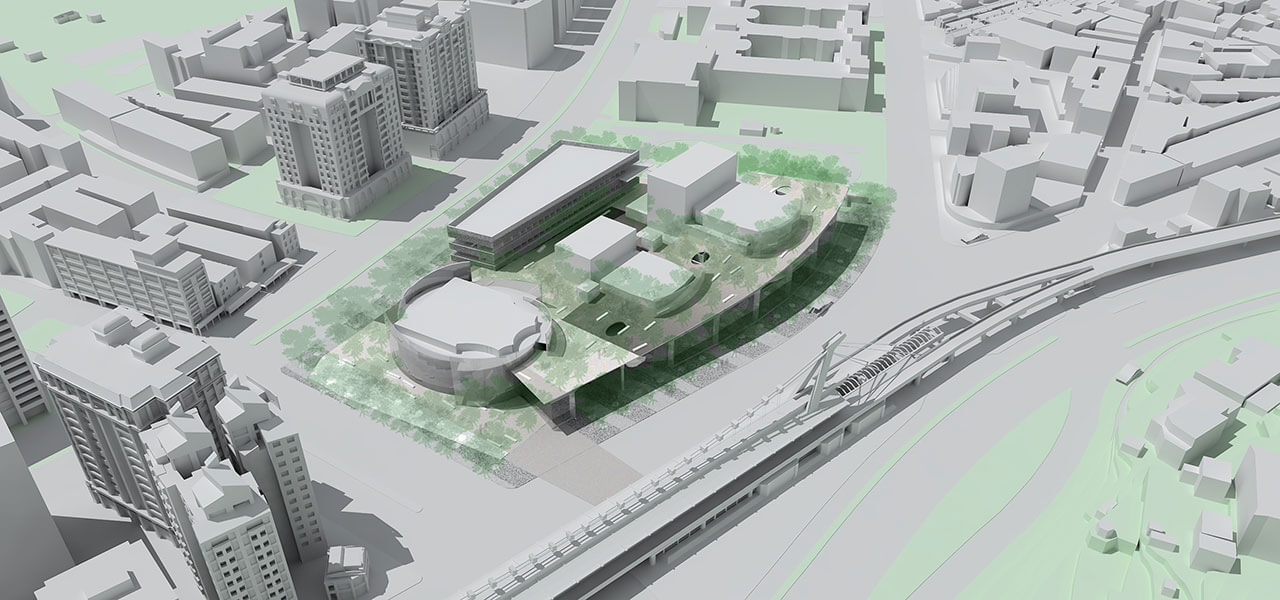
Taipei Performing Arts Center
The design for the Taipei Performing Arts Center firmly establishes an iconic, landmark building in the bustling urban context of Taipei. Wedged between the urban machine of modern Taipei and the regional ecology of the Qixing Mountains, the site of the new Taipei Performing Arts Center is ideally situated to respond to both. At the ground level, a bold envelope of trees sits atop an articulated plane of stone banding and wraps around the building, inserting the Performing Arts Center into the existing development patterns and the urban vegetation system.

Apicella + Bunton participated in an international design competition for a 410,000 square foot performing arts facility for the City of Taipei. The program included three world class performance spaces. Two 800-seat theaters and one 1500-seat theater were designed to accommodate a variety of performance types from dramatic theater to large scale operas and orchestral works.

The design provides for a landscaped urban park elevated from the busy streets below. At the southeast corner of the site, across from the TRTS Jiantan Station, a broad path of stone and vegetation lifts up from the city grade, wrapping around and between the separate buildings of the Performing Arts Center, pulling the different theaters together into a cohesive whole. At its terminus, the elevated deck is twisted up and into the winged geometry of the elliptical Multiform Theater, creating an amphitheater-like space that becomes an extension of the theater itself.

Moving up and through this ramped deck, visitors to the Performing Arts Center encounter a landscape that constantly refers to its setting. The combined experiences of being under tree canopy yet at an elevated urban vantage point connect conceptually to the neighboring Qixing Mountains, yet remain firmly of the city. The paving mix alternates between solid stone pavers and decomposed granite, the experience at the feet directing the mind between city and mountain. At places, the deck is punctured through to the building below, allowing natural light to penetrate the interior during the day and lighting the outer spaces with the inner glow of the building by night. Rainwater collection channels transect the landscape to capture storm water runoff and distribute it for irrigation and non potable interior distribution. As the channels carry excess storm water down the ramp to a conservation area, the sound and sight of the water celebrates the event of rainwater collection and recalls the historic movement of the Keelung River.
